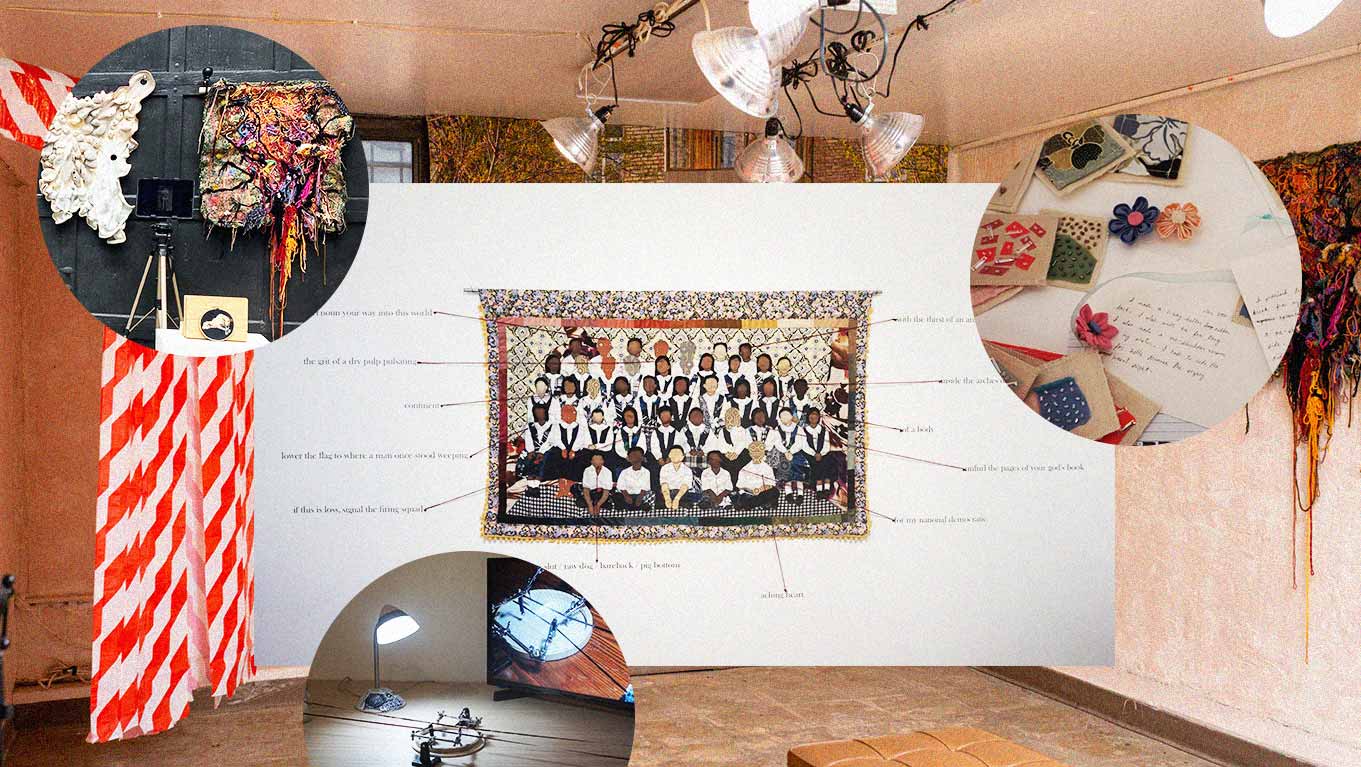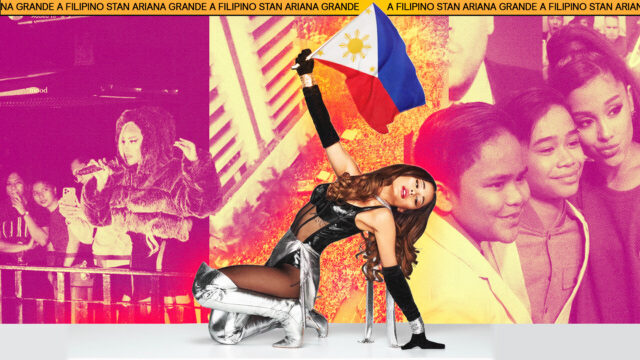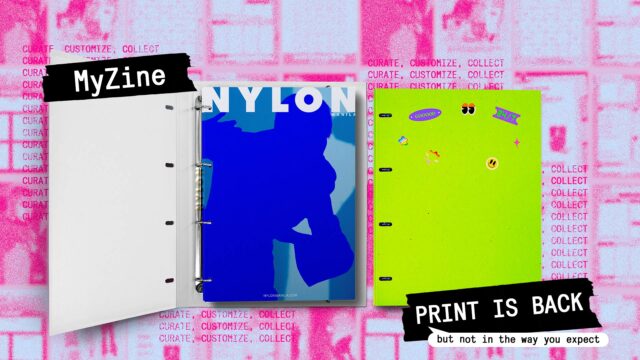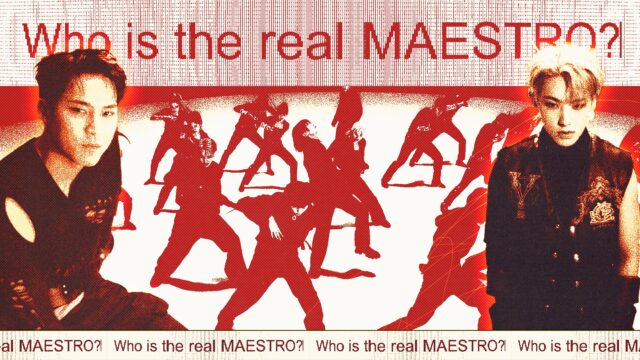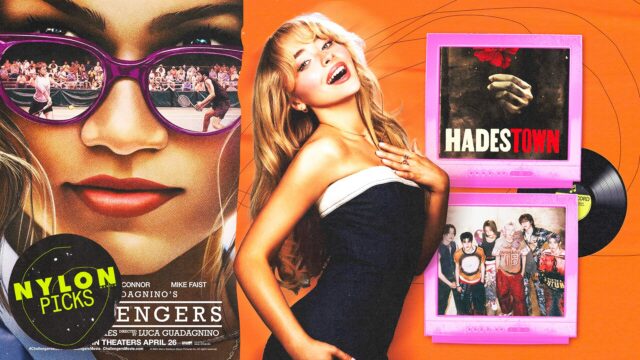In Threads, the traveling exhibition from New York and Bogotá, insight weaves into the art culture of the Philippines with texture tendency, an immersive experience that spotlights the finest young queer and women artists and poets in the country.
In the museum (or a more intimate gallery), a space lined with art of many evocative mediums and manifestations, the existence of the written text is more functional than anything. Complementing the emotions encouraged from appreciating these from a considerable distance, words are that source of information you have to squint at. Sometimes, in the midst of the ritual of resting one’s chin on the hand, furrowing of brows, and nodding a few times before moving on to the next point of interest, there is sometimes no need for what is typed out on a square piece of paper to fully comprehend the craft and creation before you.
This isn’t to say that words do not hold the same value as the visceral vessels ever so carefully and specifically positioned, because especially in the case of text-based art, it becomes central as inspiration. Beyond insight and instruction, what is written makes for a more reflective experience of consuming the visual. In the Manila leg of the traveling exhibition, Threads, the connection of art and poetry is confronted as intuition more than a response to what is already there. Operating on the precedent set in New York andBogotá, as conceptualized by artist collectives such as the Nadenka Art Group in Omsk, Russia and the Yara Arts Group in New York in collaboration with the Poets of Queens commune in Queens, New York, there was a conscious effort to heighten the proposition even more in texture tendency, as curated by Carlos Quijon Jr.
“I wanted both artist and poet to question what they know about their practices and about each other. I understand both writing and art making as creative and critical practices that each practitioner approaches with unique points-of-view,” he says of texture tendency in our conversation. “So, rather than keep these practices separate, I asked the artists and the poets to look at their own practices and see where their interests, concerns, or fixations overlap or intersect. In other words, find spaces where their process become interested in the same considerations or where they ask themselves the same questions.”
Texture Tendency, An Immersive Intersection
Exploring texture in textile and text, as posited by the overarching scope of Threads, texture tendency is a provocation of art and poetry manifested in both the physical and profound, stitching everything from spooled strands of thought, embroidered memories, and hemmed ideas. Presented by Drawing Room, the exhibit assembles works from young artists and poets based in the Philippines, decentralized from just the capital even, together with a selection of visual and written cues from its previous iterations at Maleza Proyectos in Bogotá curated by Alejandra Fonseca in February 2021 and Flux Factory, Topaz Arts, and Bliss on Bliss Art Projects organized by artist Ged Merino, curator Virlana Tkacz, and poet Olena Jennings in New York.
“I wanted to approach textile art not in relation to its raw materials nor the activities that produce it, but in terms of what effect or condition it can achieve,” explains Carlos Quijon Jr. of this iteration of the traveling exhibit, Threads. “Texture for me is a strong idea that I associate with both textile and text, so I wanted to frame the exhibition in relation to texture—not just in relation to the materials or the works but also the composition of the works in the exhibition.”
In this unique undertaking of intersecting art and poetry as a singular unit as opposed to fragments in sharp contention of attention, the entanglement that is so indicative of our lives is put on full display. Instead of mere context, the exercise of collaboration from an assemblage of young queer and women artists shift to comprehension of the human condition. Here, they navigate their creativity with critical thought, considering both the origins and realizations of threads and textiles. For texture tendency, the nuance of the endeavor encompasses the trope of texture, the tendencies of the practices, and the mutual implication of all mediums and materials.
The Unraveling
Rendered in many evocative expositions, such as obviously textile production, the art and poetry of texture tendency: Threads in Manila is a collection of stirring video projections, text operating as parasites, and disintegrating audio played from a cassette tape, among others. From drapes of string, a succession of words sewn, and thread poking through a vibrant image, this is not your year-end portfolio of quarterly home economics projects. Instead, what you are immersed in is an expansion of emotion and thought, all woven together in a comforting tapestry of humanity.
With a firm grasp on the imprint of today’s generation and their unique proclivities, everything just makes sense. Winding through the empirical experience that is texture tendency, Threads in Manila becomes a consciousness of its own. Lensed through the vantage point of youth, as realized by the minds of Michelle Esquivias, King Llanza, Alfonso Manalastas, Katherine Nuñez, Floraime Pantaleta, Miguel Puyat, Tekla Tamoria, and Nicole Tee, the possibilities become practices that make the future something to look forward to rather than feared. If anything, it becomes apparent that the spirit of collaboration is the way and the truth, especially in art and poetry. Pretty and powerful as it is on the surface, its existence doesn’t thrive in pedantry and semantics.
In the characteristic unraveling of the seamless symbiosis of conversations in texture tendency, it becomes clear that expression need not be guarded as genres or stuffed in boxes to be ogled at from a gaze way. As it continues to travel into distant destinations, these established strongholds will not only persist in the strictest sense, but ultimately evolve with the context, community, and circumstance it threads through next. More than a complexity that needs straightening out, the demands will be to lace narratives that just like those little geometrical by-the-ways in the vast enclave of an art space, one will look closer, further expanding what once was in information, insight, and yes, inspiration.
In this exclusive one-on-one, we unravel the complexities of texture tendency: Threads in Manila as explained by exhibit curator, Carlos Quijon Jr.
Did the experience of the pandemic in any way inform this exhibit? And conversely, why is something of this sort necessary despite the obvious limits in movements?
I think any exhibition developed and mounted during this time is informed by the pandemic—some not as evident as others. Since this iteration relied on collaboration between artists and poets, there were limitations on what kinds of collaboration are possible and even what forms of thinking and working together can be achieved. On the flipside, since the pandemic has made in-person collaborations the exception rather than the rule, working with Floraime who is based in Zamboanga City became easier in this sense to imagine and manifest. I think mounting a project like Threads is very apt during these times. On the one hand, it is a travelling show that foregrounds the possibilities in collaboration, which in the time of the pandemic has been rendered precarious and even life-threatening. On the other, the persistence of projects like texture tendency asks us to re-imagine and rethink what collaboration or mobility has to offer our ways of thinking about and relating to each other and the world, to think about what makes collaboration ever more necessary in a time wherein everyone has been forced into their own solipsistic bubble. This is not to pander to the thinking that art is important. More so the exhibition asks us to consider the structures and the labor involved in supporting artistic activities and how these create spaces wherein support assumes more palpable and material stakes and effects. In other words, it was important for me to push through with the exhibition because it clarified the importance of support and collaboration during this longest running pandemic.
There is a conscious predilection for young queer and women artists in the selections. Why was this important, and in the context of the art scene, why is this collection of points-of-view significant to the progression of culture in the country?
In my experience, the more exciting and sensitive propositions about contemporary life come from women and queer and trans artists and thinkers, from artists who live in places outside Manila, who are not formally trained, who refuse to inhabit a position of expertise or exceptionality as artist or poet. I refuse to think about this in terms of a general landscape involving the progression of the culture of the country, since for me that abstracts the intervention of these artists and traps them within the bounds of the national when these practices respond to various scales and coordinates of culture. The work of King Llanza for example employs an idiom attuned to the global crisis on climate. Floraime Pantaleta, meanwhile, weaves together different languages which disperse what we know as the “culture of the country.” What I can say is that the exhibition as a context benefits from these polyphony of points of view and the proliferation of approaches to artmaking. At this point, any attempt at exhibition-making that does not consider this will inevitably just tell us what we already know.
Textile, while deeply rooted in our culture and tradition, isn’t as highlighted and heroed in the same way other countries have their fabrics. How does texture tendency encourage and expand this conversation?
One thing that I set out to think about in this exhibition is the ease with which we think about textile in terms of the traditional and the cultural. If we think about how this show expands on this conversation it is through opening up the discourses on textile to questions not only of tradition and culture but also in relation to questions of its potency as material. This does not mean that talking about textile in relation to the traditional and the cultural is not important, it just means that textile also exists outside these discourses and that looking at the baggage of textile as a material in contemporary art might clarify why it has been relegated to the cultural and the traditional and at the same time bring light to why textile in the context of the cultural has not been paid as much attention as its counterparts in contemporary art.
Were there are challenges or breakthroughs in putting this together?
The most challenging might be the production side of things. With the successive and inconsistent lockdowns, it was difficult to gauge production timelines and possibilities. The most notable breakthrough, I think, is the way the exhibition has proven how collaboration thrives even at the time of the pandemic. The artists have really embraced the provocations of the curatorial design of the exhibition and allowed themselves to be shaped by the practice, the vantage point, and the creativity of others. Each collaborative project reflects on how the artists and poets deem the value of collaboration and support.
What do you, as a curator, hope that the viewer take away from in some way, shape, or form?
I think one would be that contemporary art expands what we think about art, what it can do, what are its possibilities. The young artists of the exhibition do not consider textile as mere craft, they are aware of how textile engages with and responds to myriad considerations of artistic and political life. The young poets of the exhibition know the potency of language. In all this, both artists and poets have harnessed the power of art making and the openness that inheres in its creative and critical processes. Another thing is that there are vibrant resonances with the artistic concerns of artists from Bogotá and New York, and the Philippines. I think the gift of the travelling exhibition is precisely this. It allows us to experience the art of cultures outside our own, encouraging to look at the world and acknowledging and celebrating both our differences and communities.
texture tendency: Threads in Manila runs until October 2, 2021. Email Drawing Room to book your appointment.
CONTINUE READING: WOOF! THIS FILIPINO ARTIST IS LETTING THE DOGS OUT IN THE QUEER-POWERED EXHIBIT, GOOD BOYS
